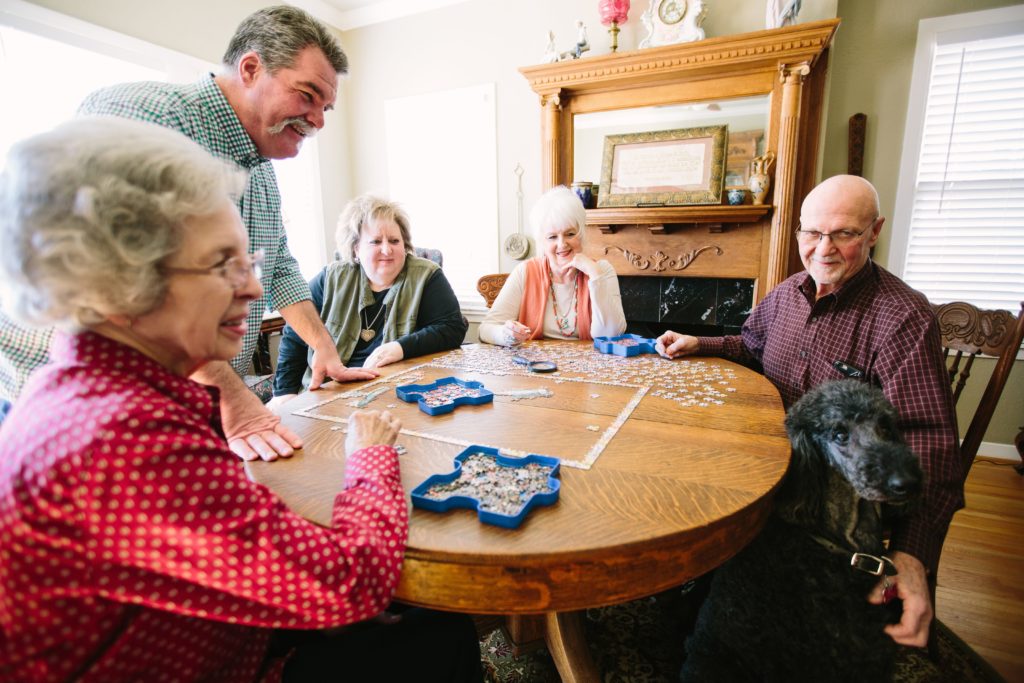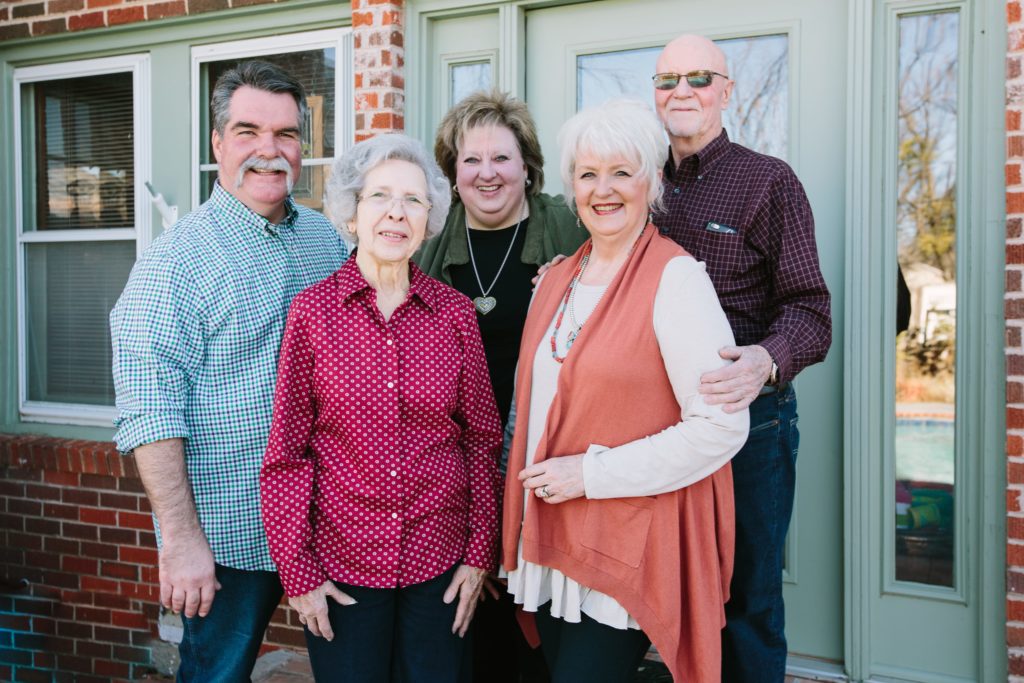Letting Go
By Tom and Betsey Craig
At an age where all of our friends seem to be helping their parents downsize, we took our parents and upsized, moving everyone in with us. That’s right … everyone! In 2003, we bought a big ol’ one-story house that’s shared by the two of us, our two moms and Betsey’s dad. We call it the Big House.
Five adult personalities living together is a story in itself, but another part of the story is dealing with lots of stuff. Even in a bigger house, we still combined three households into one. That’s three sets of kitchen cookware, including everything from stand mixers to pots and pans to measuring spoons; three sets of furniture for every room; three sets of yard equipment; dozens of all types of chairs; beaucoup end tables and lamps; an endless supply of towels and sheets; and a gazillion knick-knacks, collectibles and decorator items.

Luckily, our new crib included a little guest house that we could furnish with “leftovers” from our favorite furnishings in the Big House. But we still had to cull it down. I don’t know how many 9”x13” Pyrex baking dishes we sent to Goodwill. Or how many towels we turned into rags. Or how much “decorator stuff” we either trashed or sold in a garage sale.
But we also had another advantage in owning an antique shop. Of the truly collectible things, we kept our favorites and sent the stuff for which we didn’t have room to the shop. We have experience helping people liquidate estates and buying and selling antiques – that experience helped us know what to keep and what to sell.
Whether downsizing to a smaller dwelling, consolidating multiple households into one or settling an estate, the decisions about what to keep and what to let go are similar.
When working with a family needing to liquidate for whatever reason, we tell them the first thing they need to do is identify everything they want to keep. All too often we’ve seen situations where families have sold things, then later regretted it. Once something is sold, it’s gone. You’re not likely to have an opportunity to get it back again.
A good rule of thumb – if in doubt, keep it. If you’re unsure, keep things for the time being. You can always decide later to let them go.
The big question though, “How do I identify what to keep?”
First, is it a family heirloom with meaning?
Keep the pieces that have emotional or sentimental attachment. Those pieces will most likely have more sentimental value than intrinsic value. When the sentimental value is great and you see it sell for very few dollars, the odds of emotional regret are good.
Second, what pieces have significance because of tradition in your family?
Things that were used over the years will have great sentimental value. Keep those items. Whether it was the bowl your mom always used for potato salad or the special set of dishes that always graced the table at Christmas, the pieces with which the family shared experiences are pieces that need to be kept.
Third, are there items that can never be replaced if sold?
Sometimes families will have valuable pieces that will continue to escalate in value and, most likely, you couldn’t afford to replace them if you wanted to. Such things include jewelry, precious metals and the like.
Fourth, look at the history of the piece within the family to determine if it should be kept or not.
How was the item originally acquired? Was it bought just to fill a specific spot, but with no real attachment? Or were hours of searching invested to find something special that was treasured? If the emotional investment is great, consider keeping it.
Fifth, keep the family photos.
In our opinion, personal family history pieces should be kept – photos, special documents, Bibles and the like. If you don’t want them, pass them along to extended family members.
In our case, when we consolidated three households, family heirlooms took first priority. Special collections took second priority. Unique pieces with fun stories to share took third priority.
What about duplicates? Consider how they will be used. You may not need two identical pieces of furniture like a round dining table, but you might use one in a casual dining area and repurpose another as a game or puzzle table in a den.
You might have two identical serving trays, but think about how they might be used. If you entertain frequently, you can serve from one and have a second in the kitchen plated with more food. When the first is nearly empty, switch the trays. Replenish the one that just came back and keep that rotation going to make entertaining easier.
Other factors when deciding what to keep and what to let go include:
Space – How much space do you have to house what’s left?
Use – How will you use the items you keep?
Purpose – Will the pieces you keep serve a purpose? And yes, “It makes me happy” is a legitimate purpose.

What do I do with the things I decide not to keep?
If you want to sell items you don’t want to keep, you can have a garage sale or a living estate sale yourself, contract with a third party to have a sale for you, sell them via social media (Craigslist, Facebook, etc.), sell them to an antiques dealer, second-hand store or consignment shop. Or you can send things to an auction house.
If you don’t want to deal with selling certain items, you can donate them to people who might use them or donate to a not-for-profit organization that might generate some benefit from the items.
In the end, most folks spend more than half their lives filling a house, making a home and acquiring all sorts of items to make life more comfortable or more enjoyable. It can be emotional to start letting stuff go, but with a little thought and consideration, it can be a manageable task.
Although like something you’d see on reality TV, we did debate in the Big House about how many of those 9”x13” Pyrex dishes to keep or let go. Sometimes it’s the seemingly little things!
Tom and Betsey are co-owners of The Antique Station at 703 N. 3rd St. in downtown Abilene, along with their parents, Sam and Ginny Bolin and Mary Louise Craig; and longtime friends, Bob and Christie Beermann.

























Leave a Reply